 To enhance service speed and avoid tariff delays, we've opened a US warehouse. All US orders ship directly from our US facility.
To enhance service speed and avoid tariff delays, we've opened a US warehouse. All US orders ship directly from our US facility.
| Cat. No. | Product Name | Field of Application | Chemical Structure |
|---|---|---|---|
| DC33103 | AGI-001 Featured |
AGI-001 is an orally bioavailable, competitive antagonist of 5-HT1A/1B receptors with reversible binding properties. This compound also functions as a partial agonist at β-adrenergic receptors, making it a valuable pharmacological tool for investigating neurological disorders.
More description
|

|
| DC42735 | ElteN378 Featured |
ElteN378 is a selective FKBP12e inhibitor with potential therapeutic applications in neurodegenerative disorders and oncology. This compound shows particular relevance for research involving Alzheimer's disease, Parkinson's disease, amyotrophic lateral sclerosis (ALS), as well as various proliferative disorders and malignancies.
More description
|
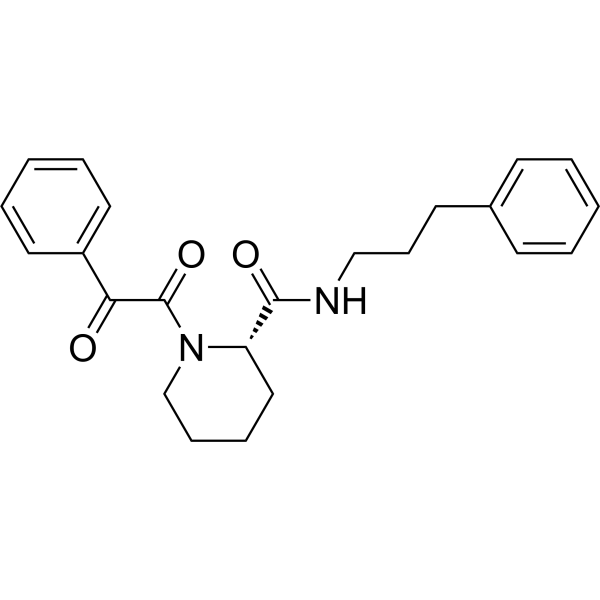
|
| DC42709 | GSK3987 Featured |
GSK3987 functions as a dual agonist for both LXRα and LXRβ nuclear receptors, demonstrating potent activation with EC50 values of 50 nM (LXRα-SRC1) and 40 nM (LXRβ-SRC1). This compound effectively upregulates key metabolic regulators ABCA1 and SREBP-1c, while simultaneously promoting cholesterol efflux from cells and stimulating intracellular triglyceride deposition.
More description
|
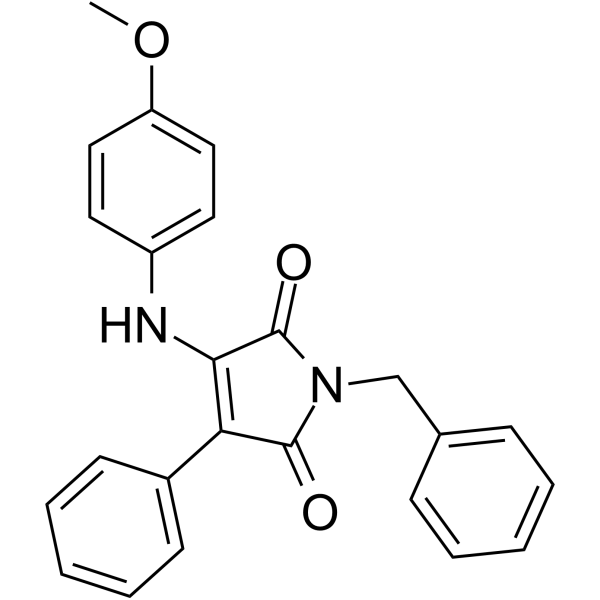
|
| DC42641 | L82-G17 Featured |
L82-G17 is a selective, uncompetitive inhibitor that specifically targets DNA ligase I (Lig I). This compound uniquely blocks the final stage of the ligation process by interfering with phosphodiester bond formation. Due to its specific mechanism of action, L82-G17 serves as a valuable molecular probe for studying ligase catalytic activity.
More description
|
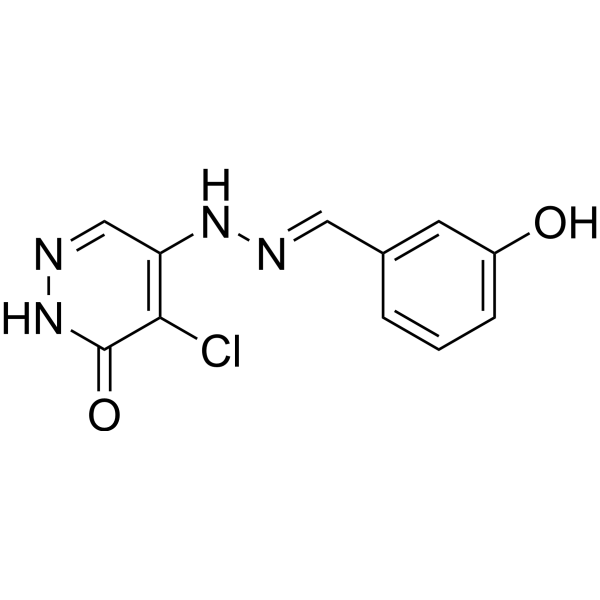
|
| DC12443 | LASV inhibitor 3.3 Featured |
LASV inhibitor 3.3 (LAMP1 inhibitor 3.3) is a specific inhibitor of Lassa fever virus (LASV, IC50=1.8 uM), inhibits LASV GP-mediated infection and cross-links to the LASV receptor, LAMP1, in cells; does not inhibits the GP-mediated infection of LCMV, LuJo
More description
|

|
| DC42586 | SSAA09E3 Featured |
SSAA09E3 is a potent viral entry inhibitor that effectively blocks SARS-CoV infection. In cellular assays, it demonstrates inhibitory activity against SARS/HIV pseudotyped viruses in 293T cells (EC50 = 9.7 μM) and shows even greater potency against authentic SARS-CoV in Vero cells (EC50 = 0.15 μM).
More description
|
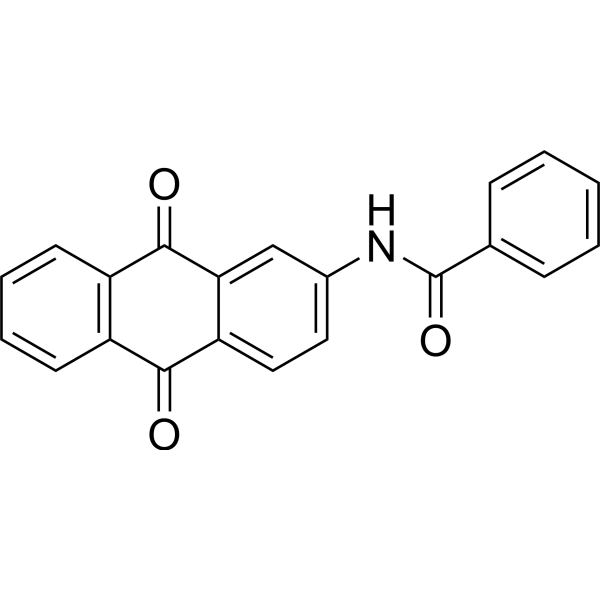
|
| DC42592 | STING inhibitor C-170 Featured |
STING-IN-2 (C-170) is a covalent-binding small molecule that potently suppresses STING activity. It demonstrates effective inhibition against both murine (mmSTING) and human (hsSTING) variants, making it a valuable tool for investigating autoinflammatory disorders.
More description
|
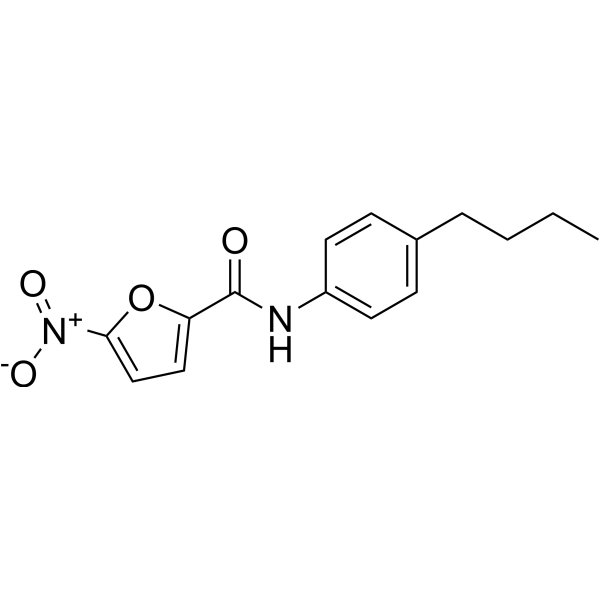
|
| DC42762 | PKZ18 Featured |
PKZ18 is a novel antibiotic that effectively suppresses bacterial growth, exhibiting MIC values ranging from 32 to 64 μg/mL against a broad spectrum of Gram-positive bacteria. Its mechanism involves the selective inhibition of glycyl-tRNA synthetase mRNA transcription and translation in vivo. PKZ18 specifically targets stem I specifier loops in Gram-positive bacteria, disrupting T-box-mediated transcriptional read-through of downstream genes. By interfering with codon-anticodon recognition, it blocks essential tRNA binding and demonstrates a high barrier to resistance development.
More description
|
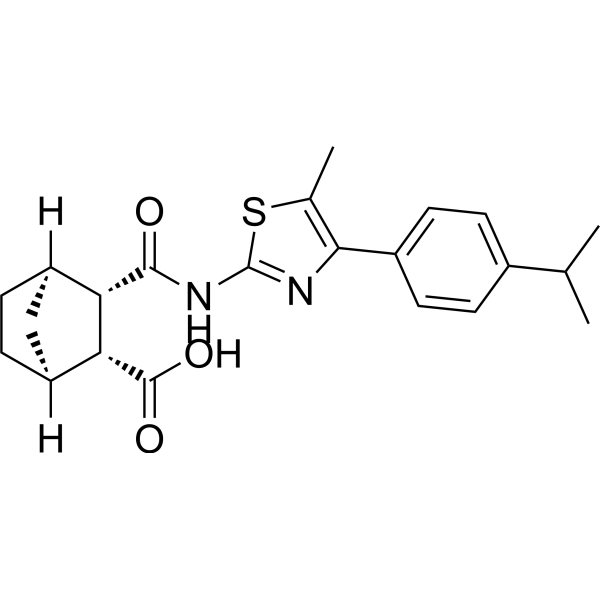
|
| DC22129 | HOIPIN-1(JTP-0819958;HOIP inhibitor-1) Featured |
HOIPIN-1 (JTP-0819958, HOIP inhibitor-1) is a chemical inhibitor of linear ubiquitin chain assembly complex (LUBAC, IC50=2.8 uM), specifically generates Met1-linked linear ubiquitin chains through the ubiquitin ligase activity in HOIP, and activates the N
More description
|

|
| DC34270 | UCF-101 Featured |
UCF-101 is a selective inhibitor of the pro-apoptotic mitochondrial serine protease Omi/HtrA2 involved in the cellular response to thermal and oxidative stress.
More description
|

|
| DC42573 | ML-SA5 Featured |
Novel mucolipin 1 (ML1) agonist, inducing lysosomal Ca2+ release, ameliorating muscular dystrophies and activating TFEB to correct lysosomal insufficiency in mdx mice
More description
|

|
| DC34240 | JR-AB2-011 Featured |
JR-AB2-011 is a potent and selective inhibitor of mTORC2 kinase activity. It markedly reduces mTORC2 signaling and IC50 while enhancing apoptotic levels in GBM cells.
More description
|

|
| DC21422 | NSC 370284 Featured |
NSC 370284 is a small molecule that directly binds to and inhibits STAT3/5, significantly and selectively suppresses the viability of AML cells with high level of TET1 expression both in vitro and in vivo.
More description
|
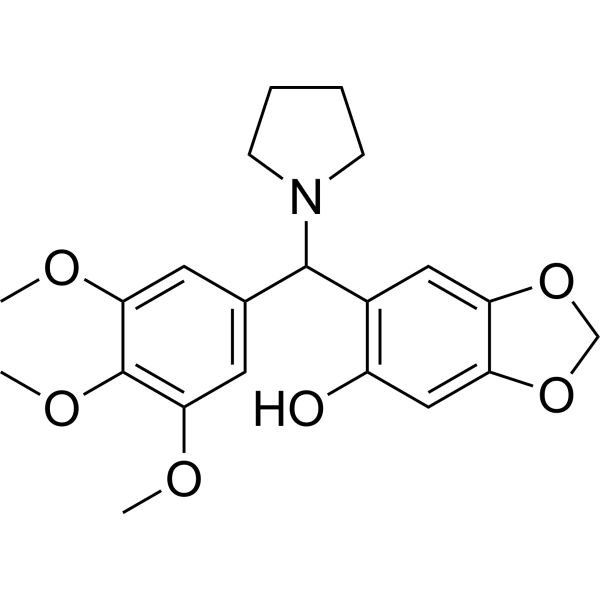
|
| DC22069 | DB818 Featured |
DB818 (DB-818, DB 818) is a small molecule inhibitor of HOXA9/DNA interaction through binding as minor groove DNA ligand on the HOXA9 cognate sequence.
More description
|

|
| DC21687 | SR31527 Featured |
SR31527 is a novel allosteric Kinesin-like protein KIFC1 inhibitor that inhibits microtubule-stimulated KIFC1 ATPase activity with IC50 of 6.6 uM, binds directly to KIFC1 with Kd of 25.4 nM.
More description
|

|
| DC22180 | NPD8733 Featured |
NPD8733 (NPD-8733) is a small-molecule ligand of valosin-containing protein (VCP)/p97, binds to the D1 domain of VCP/p97.
More description
|

|
| DC60143 | MT 63-78 Featured |
MT 63-78 is a specific and effective direct AMPK activator (EC50: 25 μM). MT 63-78 blocks prostate cancer growth by inhibiting the lipogenesis and mTORC1 pathways. MT 63-78 has antitumor effects. MT 63–78 also causes cell mitotic arrest and apoptosis.
More description
|
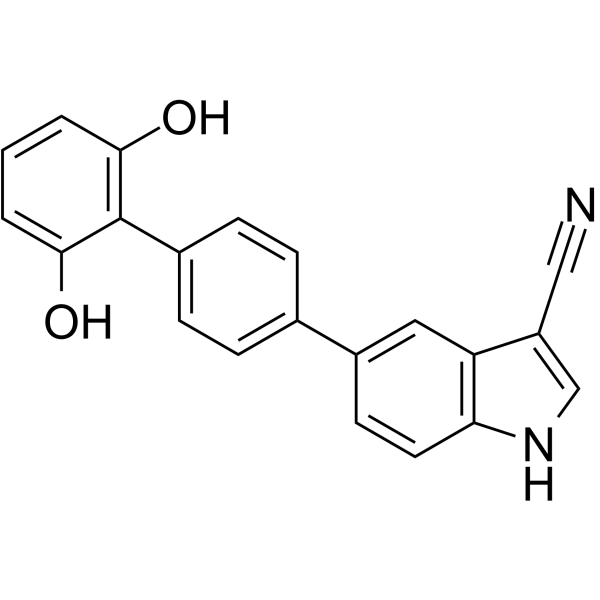
|
| DC23005 | SC 57461 Featured |
SC-57461A is a highly potent, orally bioavailable nonpeptide compound that selectively inhibits Leukotriene A4 (LTA4) hydrolase. It demonstrates strong activity with IC50 values of 2.5 nM (human), 3 nM (mouse), and 23 nM (rat) for recombinant LTA4 hydrolase.
More description
|

|
| DC12671 | Gboxin Featured |
Gboxin is a compound that disrupts oxidative phosphorylation, making it a promising therapeutic agent specifically for glioblastoma treatment.
More description
|
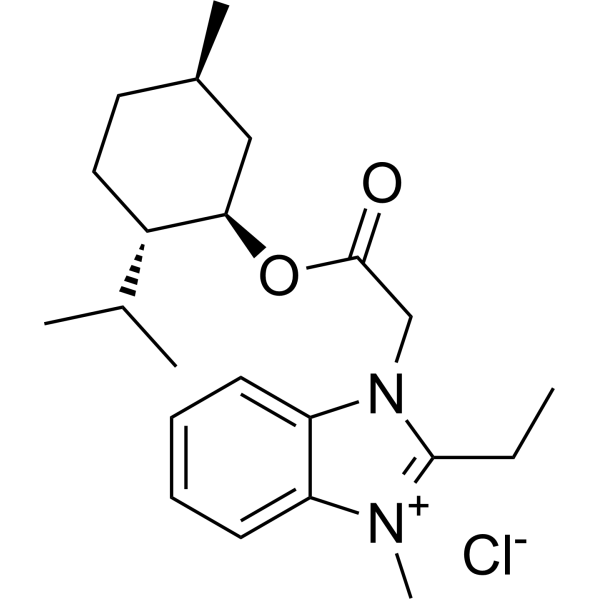
|
| DC23744 | VPC-80051(VPC80051) Featured |
VPC-80051 (VPC80051) is the first small molecule inhibitor of hnRNP A1 splicing activity, targets RNA-binding domain (RBD) of hnRNP A1.
More description
|
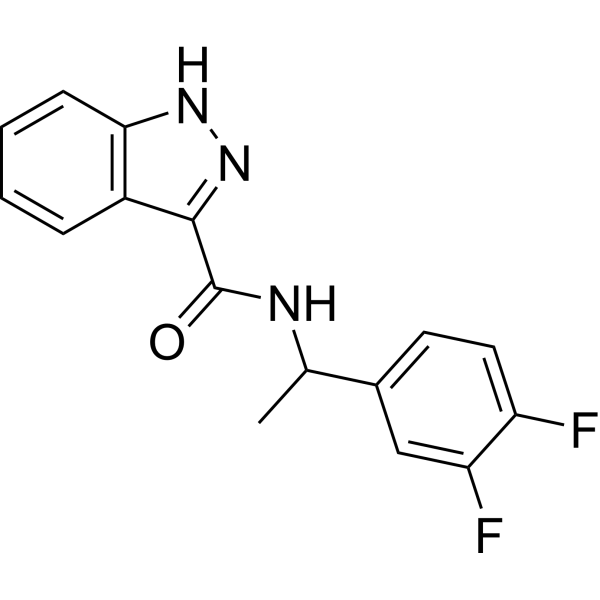
|
| DC20005 | RG7834 (RO 7020322) Featured |
RG7834 (RO 7020322) is a highly selective and orally bioavailable HBV inhibitor, potently inhibits HBV antigens (both HBsAg and HBeAg) and HBV DNA, with IC50s of 2.8, 2.6, and 3.2 nM, respectively, in dHepaRG Cells.
More description
|
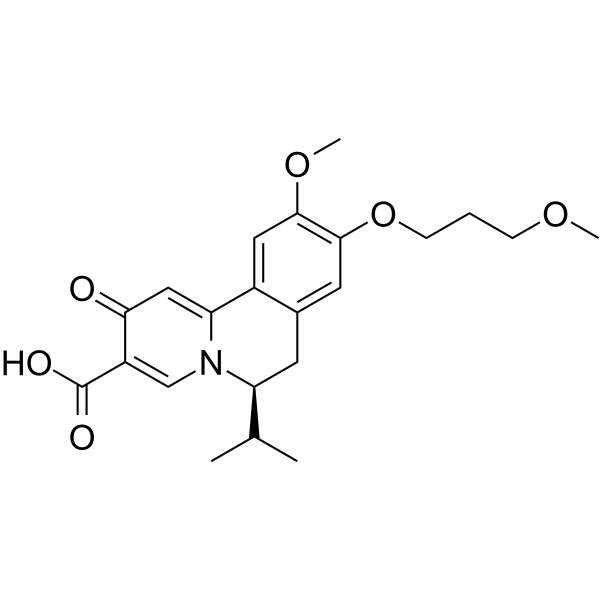
|
| DC60672 | BAY-184 Featured |
BAY-184 is the first, potent and selective acylsulfonamide-benzofuran in vivo-active KAT6A/B inhibitor with IC50 of 71 nM.
More description
|
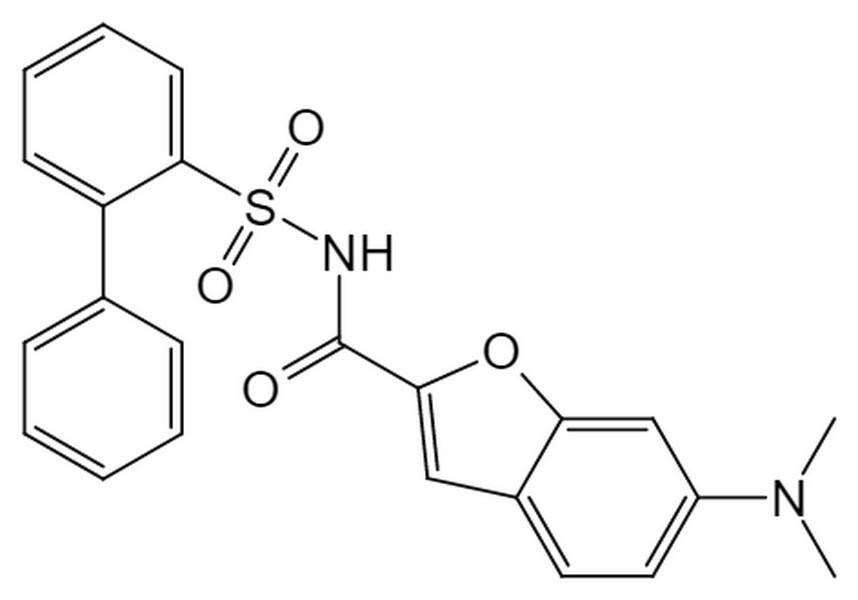
|
| DC11511 | A-485 Featured |
A-485 is a highly potent and selective small-molecule inhibitor targeting the catalytic activity of p300/CBP histone acetyltransferases (HATs). It demonstrates remarkable inhibitory potency, with IC50 values of 9.8 nM (p300) and 2.6 nM (CBP).
More description
|

|
| DC42783 | CVT-11127 Featured |
CVT-11127 functions as a potent inhibitor of stearoyl-CoA desaturase (SCD), demonstrating significant biological activity. This compound triggers apoptotic pathways and effectively halts cell cycle progression at the G1/S transition phase. Due to these mechanisms of action, CVT-11127 shows promise as a candidate for lung cancer research.
More description
|
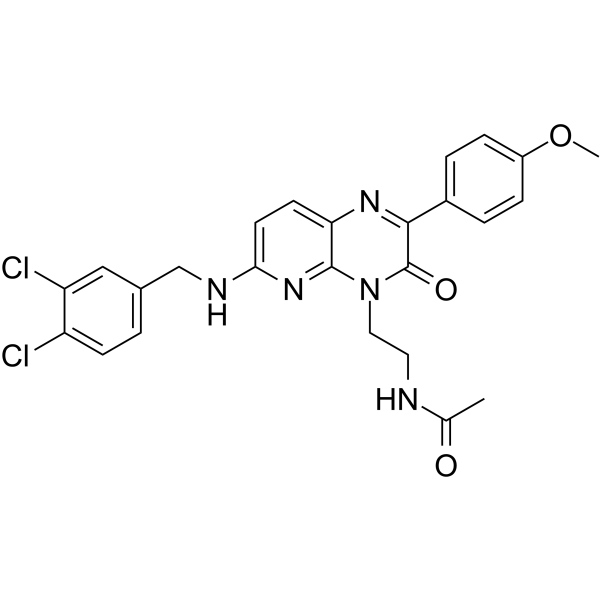
|
| DC10771 | CU-CPT-8m Featured |
CU-CPT-8m is a nolve TLR8 inhibitor.
More description
|

|
| DC8437 | AGK2 Featured |
AGK2 is a potent and selective SIRT2 inhibitor, exhibiting an IC50 of 3.5 μM against this target. While it primarily acts on SIRT2, it also weakly inhibits SIRT1 (IC50 = 30 μM) and SIRT3 (IC50 = 91 μM), demonstrating lower potency toward these isoforms.
More description
|

|
| DC22753 | NS13001 Featured |
NS13001 is a highly selective and orally bioavailable allosteric positive modulator targeting small-conductance calcium-activated potassium (SK) channels. It exhibits potent activity, with EC50 values of 1.8 μM for SK2 and 0.14 μM for SK3, demonstrating greater potency toward SK3. Due to its pharmacological profile, NS13001 has emerged as a promising candidate for treating spinocerebellar ataxia type 2 (SCA2) and may also have therapeutic potential in other forms of cerebellar ataxia.
More description
|
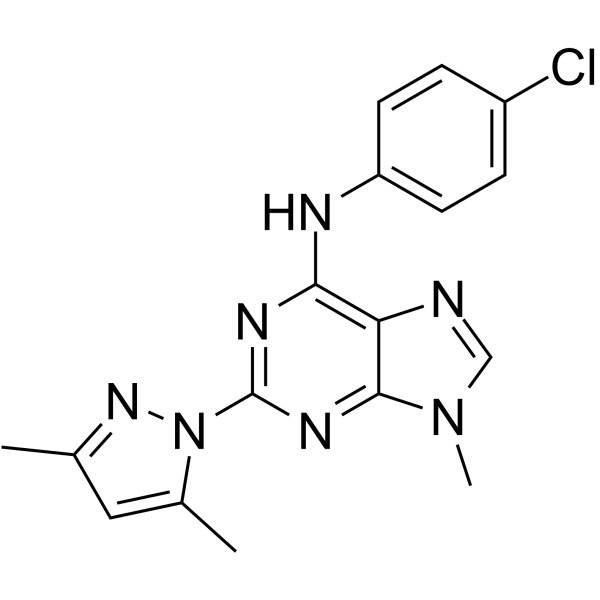
|
| DC60138 | Imidacloprid-urea Featured |
Imidacloprid-urea is a key breakdown product of imidacloprid, a widely applied neonicotinoid insecticide effective against pests in crops such as cereals, vegetables, tea, and cotton. As a metabolite, imidacloprid-urea may compete with imidacloprid for binding sites in soil, influencing its environmental persistence, mobility, and bioavailability. This interaction could alter the overall environmental behavior of imidacloprid, impacting its ecological fate.
More description
|
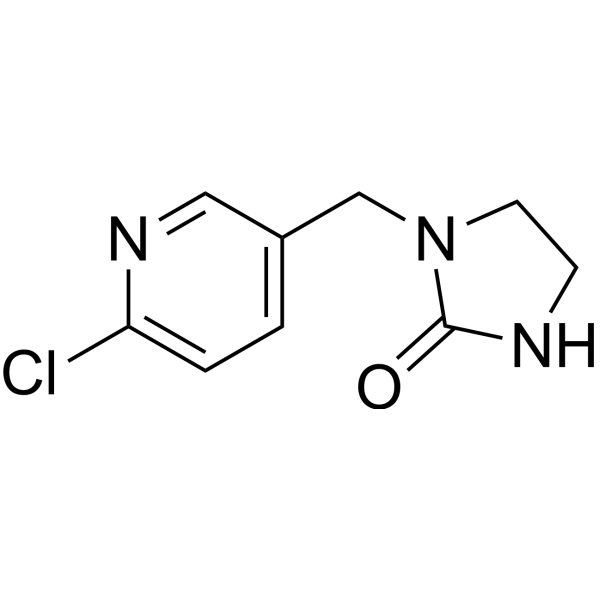
|
| DC60136 | 2-(Aminosulfonyl)benzoic acid Featured |
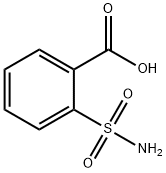
|
|
| DC60134 | Soporidine Featured |
Soporidine is a strigolactone (SL) antagonist and inhibitor of germination in their biological assays. It binds AtHTL and specifically interferes with SL signaling.
More description
|
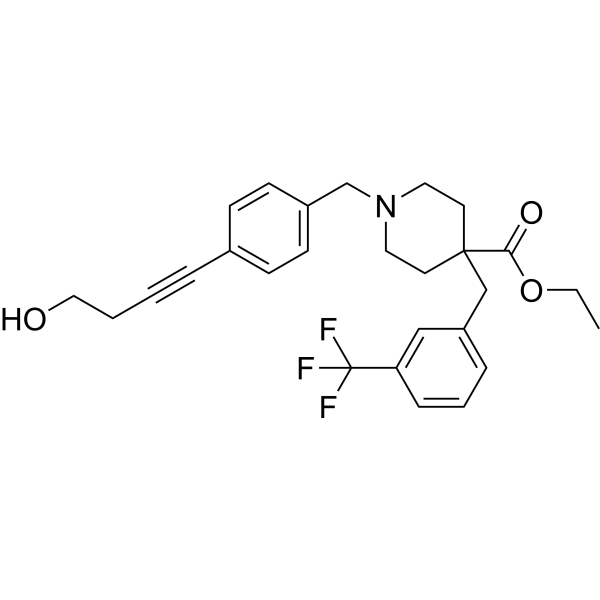
|